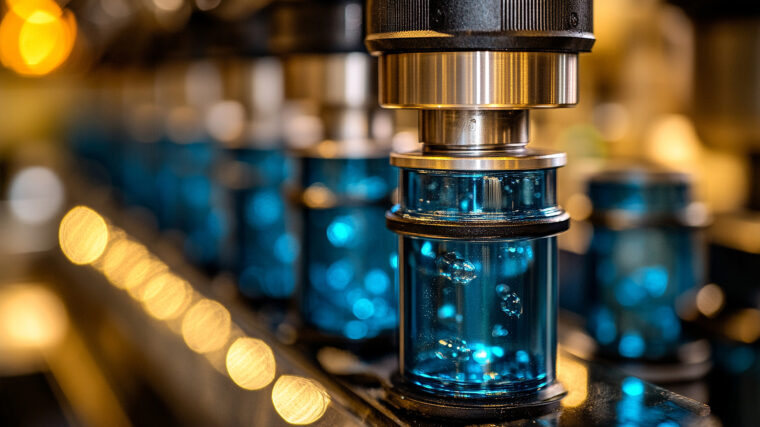As countries intensify efforts to decarbonise their energy systems, nuclear power is experiencing a cautious renaissance. At the heart of this revival is a new generation of compact, factory-built units called Small Modular Reactors (SMRs). Unlike the gigawatt-scale plants of the 20th century, SMRs aim to deliver clean, stable electricity—and often heat—in smaller, scalable packages.
With outputs typically under 300 megawatts per reactor, SMRs are designed to be mass-manufactured, transported by truck or ship, and assembled on-site with far lower upfront costs and lead times than conventional reactors. They promise flexible deployment—from industrial parks and remote communities to floating barges and co-generation sites—and aim to address one of nuclear’s biggest barriers: time and cost.
Global Progress: From Blueprints to Reality
Only one SMR is currently in operation: Russia’s Akademik Lomonosov, a floating light water reactor based on icebreaker propulsion systems, supplying power to remote communities in the Arctic. But others are close behind. (1)
China’s state-owned CNNC is building the ACP100 also known as Linglong One, a small pressurized water reactor (PWR), on Hainan Island with grid connection targeted for late 2026. (2). In Canada, OPG obtained final permission to construct the first SMR on Lake Ontario. (3). In the U.S., X-Energy (4) and Kairos Power (5) are advancing demonstration units under Department of Energy funding.
Perhaps the most watched was NuScale Power, which made headlines in 2023 as the first SMR design certified by the U.S. Nuclear Regulatory Commission. NuScale is now refocusing efforts overseas, particularly in Poland, Romania and Kazakhstan. (6)
In the UK, Rolls-Royce SMR has attracted substantial government support and is progressing through regulatory approval for its 470 MWe modular plant, with manufacturing hubs and deployment sites already scoped. (7)
New Players, New Concepts
Not all SMRs follow the traditional light-water model. A wave of startups is rethinking nuclear from first principles, including fuel, coolant, and even physical form.
Last Energy a U.S. startup, offers a compact 20 MWe PWR reactor system in a shipping container-style housing, aimed at industrial clients. Its business model focuses on vertical integration: design, construction, financing, and operation are bundled as a single service. The company has already signed preliminary deals in Poland and the UK. (8)
Finland’s Steady Energy is targeting district heating—a large carbon footprint in northern Europe—with its 50 MW low-pressure reactor, designed to replace coal and gas boilers in urban heating systems. (9)
Beyond Uranium: Molten Salts and Thorium
While uranium remains the standard fuel for most designs, some SMR developers are pushing into exotic territory. Danish startup Copenhagen Atomics is developing molten salt reactors that use thorium—a fertile element that breeds fissile uranium-233 during operation—and aims to produce low-cost, mass-deployable 100 MWth units. (10)
Similarly, Thorizon, a Dutch firm spun out from the NRG research centre in Petten, is building a molten salt reactor designed to use spent nuclear fuel and thorium. Their pitch is compelling: clean energy, plus a partial solution to the long-standing nuclear waste issue. (11) But it is China that has moved fastest. In April 2025, Chinese authorities confirmed that a 2 MWth thorium-capable molten salt reactor in the Gobi Desert—known as TMSR-LF1—had entered continuous operation. The project, led by the Shanghai Institute of Applied Physics, is based directly on designs pioneered in the United States during the 1960s. (12)
A Forgotten Pioneer: Oak Ridge’s MSRE
The Chinese TMSR is a modern descendant of the Molten Salt Reactor Experiment (MSRE), developed at Oak Ridge National Laboratory in Tennessee. Between 1965 and 1969, MSRE ran on both uranium-235 and uranium-233 (bred from thorium), demonstrating exceptional performance, safety, and efficiency. (13)
Though the MSRE was eventually shelved due to Cold War priorities favouring fast plutonium breeders, its technical papers remained in the public domain. Chinese scientists studied these documents extensively, using them as a blueprint for the TMSR-LF1, bringing the thorium molten salt vision full circle—half a century later.
Economics and Market Models
Proponents claim SMRs can be built for a fraction of the cost of large-scale reactors, potentially $1–3 billion instead of $10 billion or more. If factory production can be scaled, capital costs could fall further.
Most SMR business models rely on:
- Modular scaling, adding reactors as demand grows.
- Co-location with industrial users, allowing for off-grid deployment.
- Public-private partnerships, especially in early deployments.
- Heat and hydrogen applications, extending value beyond electricity.
Firms like GE Hitachi, X-Energy, and Terrestrial Energy are also pursuing reactor systems designed for cogeneration, process heat, and synthetic fuel production.
Safety and Environment
Modern SMRs incorporate passive safety systems—designs that cool themselves without power or operator intervention. Some are built underground for additional protection against natural disasters or sabotage.
Environmental benefits include:
- Low life-cycle carbon emissions (~10 gCO₂/kWh)
- Minimal air pollutants
- Potential for reduced nuclear waste in advanced designs
- Flexibility to pair with intermittent renewables
Challenges remain: licensing pathways are still slow, particularly for non-light-water designs. Public trust in nuclear energy remains mixed. And for advanced fuel types like thorium or HALEU (high-assay low-enriched uranium), supply chains are still in their infancy.
Powering the Future
SMRs represent more than just smaller nuclear plants—they are a rethinking of what nuclear power can be: affordable, flexible, and ready to serve both grid and off-grid needs. Though only a handful of units are operational or under construction today, momentum is building fast.
Whether powered by conventional uranium or advanced fuels like thorium, SMRs could become a cornerstone of the next energy transition. They offer both supply chain resilience and a path to clean, dispatchable power that doesn’t depend on the weather—or geopolitics.
And in a twist of nuclear history, the future of thorium-fueled SMRs may rest not in Washington or Paris, but in the salt flats of the Gobi Desert and the shipping containers of Danish start-ups.

